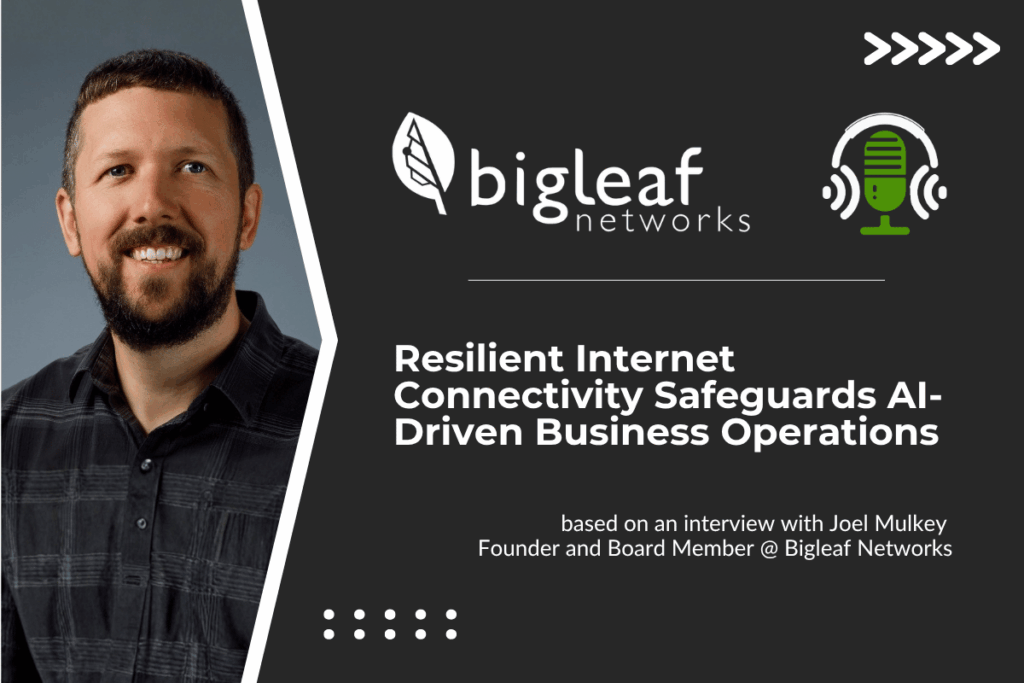AI Workloads Demand Unbroken Connectivity
Artificial intelligence now underpins decision-making, customer support, and product development. That shift raises a simple truth: if connectivity falters, business stops. Joel Mulkey, Founder and Board Member at Bigleaf Networks, warns that even short interruptions can derail expensive AI training runs or cloud-based inference models.
“If my IP address changes, at a minimum, I’m gonna lose my VPN session. But worse, I may break my training run or some other aspect of what I’m trying to do,” he explains. For companies running AI at scale, the stakes are measured in hours of lost computation and thousands of dollars in productivity.
How Adaptive Design Prevents Downtime
Bigleaf’s tunnel-based architecture keeps sessions stable through automatic rerouting. The system detects circuit health ten times per second and shifts traffic instantly to the best path—without breaking VPNs, logins, or active AI processes. That stability turns connectivity from a risk into a strategic asset.
Mulkey notes that traditional networks rely on rigid, rule-based systems that can’t keep up with dynamic workloads. Adaptive monitoring learns from traffic behavior, minimizing manual configuration and ensuring performance as applications evolve.
Balancing Cloud and Local AI Infrastructure
Modern enterprises operate in two AI realities: cloud-hosted tools such as ChatGPT and internal clusters training proprietary models. Both require continuous, session-preserving networking. “If intelligence has moved a little bit out of our brains into this AI system, we’re more reliant on that.” When connections drop, teams lose access to their data, their workflows, and their momentum.
By linking sites through adaptive cloud gateways, Bigleaf ensures that AI operations—whether training on-prem or running in the cloud—stay resilient against latency and outages.
Future-Proofing with Adaptive Networking
As AI and automation expand, the volume of data crossing enterprise networks will grow exponentially. Legacy systems that depend on static rules can’t scale to those demands. Adaptive networking uses real-time analytics to prioritize interactive traffic and maintain throughput without constant manual tuning. That approach frees IT teams to focus on innovation instead of firefighting connection issues.
Key Takeaways: Resilient Connectivity for AI Workloads
- AI workloads magnify the cost of downtime and session loss.
- Adaptive tunnel-based design maintains training and cloud processes.
- Continuous monitoring reduces manual rule management.
- Static IPs and intelligent rerouting protect business continuity.
- Resilient connectivity is a core requirement for AI success.
Highlights from Joel Mulkey on AI Infrastructure and Business Continuity
- How AI makes network reliability a board-level concern.
- Why adaptive monitoring is key to AI infrastructure performance.
- How static IP blocks and session stability protect training jobs.
- The evolving role of connectivity in innovation and customer trust.
- How future-ready design reduces risk for distributed operations.
Connectivity That Empowers Innovation
AI is only as strong as its connection to data. As Joel Mulkey reminds leaders, resilient internet connectivity is the infrastructure that enables innovation, productivity, and growth. By combining session-preserving failover with adaptive intelligence, Bigleaf Networks gives businesses confidence that their AI operations will run without interruption—no matter what happens behind the scenes.
Related Links:
- Building Smarter AI: How Resilient Networks Protect Productivity
- Inside Bigleaf’s Vision: Resilient Adaptive Networks for the AI Era
- Rerouting in Real Time Without Breaking IP Sessions
- Watch the YouTube Playlist of video episodes
- Watch the YouTube Shorts Playlist
- Subscribe to the LinkedIn Newsletter
- Listen on Captivate: Go Beyond the Connection
- Follow us on social: Linkedin | Facebook | Instagram
